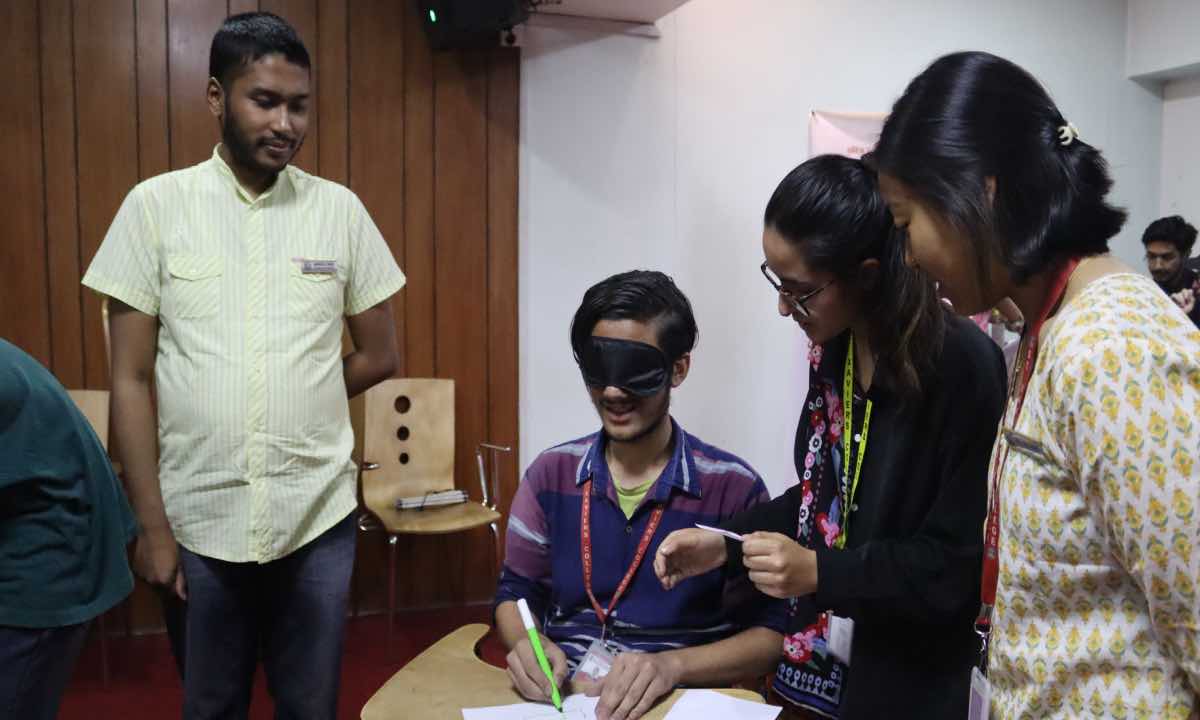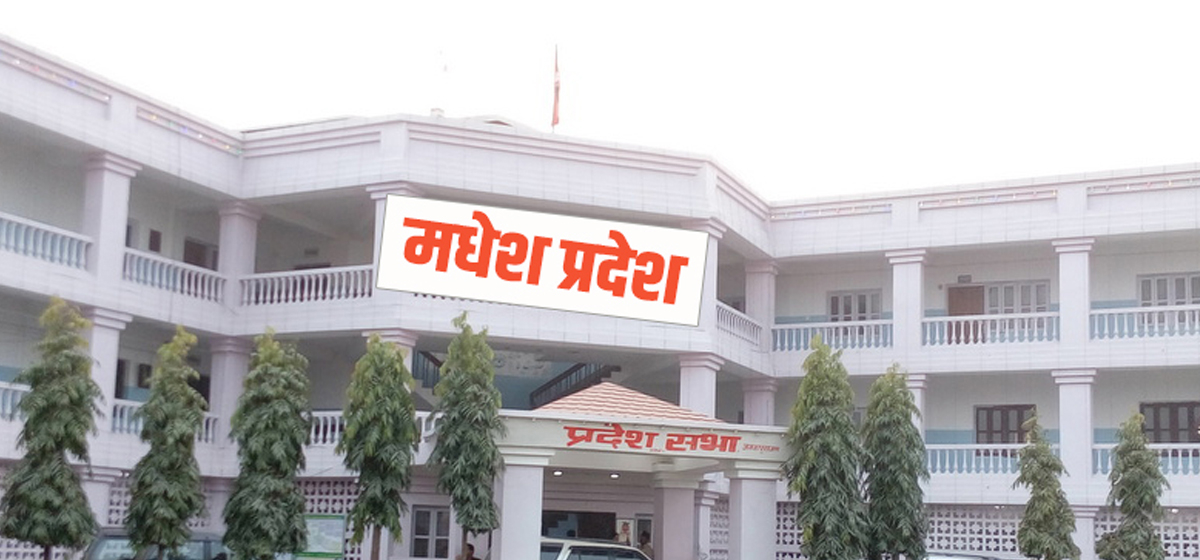
OR


Lila Nath Paudel
The author, an M Phil scholar of English, teaches English Language and Literature at Gramin Adarsha Multiple Campus, Tarakeshwor, Kathmandunews@myrepublica.com
More from Author
People take pride in speaking English with native accent. When I speak English, I want the world to know I am a Nepali
English has become a global language because of the power it holds in different spheres of life. Its spread has accelerated due to growing need for global communication. English is used worldwide in its various regional intra-language varieties and such varieties are known as World Englishes.
The issue of World Englishes was first raised in 1978 to examine the concepts of regional Englishes globally. World English is integrative in its scope and includes theoretical and applied studies on language, literature and English teaching, with emphasis on cross-cultural perspectives and identities. In the past three decades, the study of the formal and functional implication of the global spread of English has received considerable attention among scholars of English language, linguistics, literature, creative writing and literary criticisms. There is now a growing consensus among scholars that there is not one English language variety any more, rather there are many varieties studied within the conceptual framework of World Englishes that represent diverse linguistic, cultural and ideological voices.
Diverse uses for English, the implications for different cultures, the changing nature of the language itself and the roles it plays in different communities make the study of English language a complex subject. A method of simplifying and interpreting these interactions is best represented within Braj Kachru’s three ‘Concentric Circles Model’ which rightly captures the global spread of English.
Three circles
Inner Circle is where English originated from and spread globally. Countries like North America, UK, New Zealand, Australia and Canada fall under this category. Outer Circle refers to the varieties that emerged in many parts of Asia and Africa due to the historical and political influence of the UK and the USA while colonizing these nations. India, Nigeria, Singapore, Pakistan and Philippines are some examples. Expanding Circle is where English is used for international communication and occupies dominant role in education system. Japan, China, Korea and Nepal fall under this circle.
The great advantage of this model is that it makes English plural. One English becomes ‘many’ Englishes. Second, the model does not suggest that one variety is any better, linguistically speaking, than any other. The spread of English has resulted in the development of many Englishes and not the transplanting of one model to other countries. That is, English now has multi-cultural dimensions.
With an ever-growing number of people speaking English, it is not surprising that the language is diversifying and ‘English’ is becoming ‘Englishes’. At the moment, non-native speakers outnumber native speakers and these non-native speakers use English for a variety of purposes including for intra-national communication. Inner Circle has gradually begun to lose its grip. Hence, English is no longer the sole property of native speakers but the language of non-native speakers as well who use and adopt it in their own socio-cultural context.
Which English to teach?
The model of English that should be used in classrooms has also become a subject of debate. There is no consensus on whether Inner Circle English or some other new Englishes should be adopted for pedagogical purpose. Some scholars say that it would be most unwise to recognize second language varieties as teaching models because it is doubtful whether the second language varieties really exist as coherent, homogenous linguistic systems, and even if they do, they are qualitatively different from and inherently less stable than mother-tongue type English. Some others argue that World Englishes should be the model of English for teaching purpose because they are capable of dealing with a wider range of English varieties than someone stuck with native-speaker attitudes and competence.
The recent development has left many tasks for ELT practitioners. One of those relates to how the varieties of English across the globe can be incorporated in teaching and learning process in order to accommodate the learners’ need and curricular goal. Besides, the limited exposure to English varieties in classroom may lead the students to confusion or resistance when they are confronted with other types of English in their real life.
In Nepal, evidence shows that English teachers often do not have sufficient experiences in using English in real interaction with both Inner and Outer circle speakers. They come to class with limited English proficiency they have acquired in university classroom. But being an English teacher is to play an inevitable part in this globalizing teaching industry.
Many people worry that the rapid spread of English might threaten speakers in the Inner Circle, so it is highly recommended that they open themselves to new varieties. As English is adopted and modified across the globe, everyone—native or non-native speaker—needs to be aware of new English varieties. Ready or not, we need to be competent in understanding and adapting to multiple dialects. Besides, English nowadays is no longer a singular, uniform language but has multiple varieties such as Singapore English (Singlish), Hindi English (Hinglish), Chinese English (Chinglish) and Nepali English (Nenglish).
So far as the exposure of world Englishes into the classroom is concerned, studies have shown that communication is not a problem, it is a non-standard pronunciation rather than syntax, grammar or even lexis that produces a negative reaction. Exposure of language learners to different varieties of English, particularly through movies, sound recordings and television, can considerably reduce the problem. It should not be forgotten that native speakers of English encounter similar difficulties with other varieties of English. When American films were first shown in Britain, many viewers believed that they were listening to a foreign language.
Accept multiculturalism
The teachers of English should capitalize on multicultural experiences that children bring into the classroom while teaching English. Similarly, teaching of English should be contextual and we need to educate children about the nature of English in relation to society. This means to address the expectations and experiences of children from diverse cultural backgrounds, teachers have to be transformative intellectuals. Teachers should understand that classroom is socially constructed and they should create such an environment where students from various linguistic and cultural backgrounds can get opportunities to utilize their prior knowledge.
English teachers are not only in-charges of classroom but also agents of social change. They can also contribute to foster democracy and critical thinking skill by creating inclusive learning environment where students can exercise their values, assumptions and identities shaped by local, national and global socio-cultural settings and expectations. As far as possible, they should teach students creatively so that they get more opportunities to use English.
They can design syllabuses and develop viable methods of teaching English by considering their own multicultural and multilingual realities rather than following rigid Inner Circle model of teaching English. For Nepal, three language policies (mother tongue, Nepali and English) can be a pragmatic policy for placing English in multicultural and multilingual contexts.
Today, people using English do not communicate solely with native speakers. More often than not, they communicate with non-English speakers, their English therefore does not need to reflect Anglo-Saxon culture. English is no longer a colonial language. It is a tool with which people communicate with the world. English is a language for communication between people from different cultures. It is therefore natural for Nepali to speak English with Nepali accent, Japanese with Japanese and Chinese with Chinese accents. English of different cultures should be encouraged as it reflects the users’ identity and culture.
Nowadays, people take pride in speaking English with native accent. When I speak English, I want the world to know I am a Nepali.
The author, an M Phil scholar of English, teaches English Language and Literature at Gramin Adarsha Multiple Campus, Tarakeshwor, Kathmandu
lilanathpaudel74@gmail.com
You May Like This

Conversation with digital darlings
Don’t go coy with these faceless digital darlings. Get mollycoddled by striking a lovely conversation with them now ... Read More...

Language in danger
Unhealthy infatuation with English language risks Nepal’s minority languages like Tharu, Maithili, Awadhi, Bhojpuri, Gurung, Newari and Limbu by putting... Read More...

When teachers fail
There are many university teachers who can’t understand and speak English well but are ‘teaching’ in English medium ... Read More...







Just In
- First meeting of Nepal-China aid projects concludes
- Lungeli appointed as Minister for Labor and Transport in Madhesh province govt
- Bus knocks down a pilgrim to death in Chitwan
- One killed in tractor-hit
- Karnali Chief Minister Kandel to seek vote of confidence today
- Chain for Change organizes ‘Project Wings to Dreams’ orientation event for inclusive education
- Gold price decreases by Rs 200 per tola today
- National Development Council meeting underway












Leave A Comment